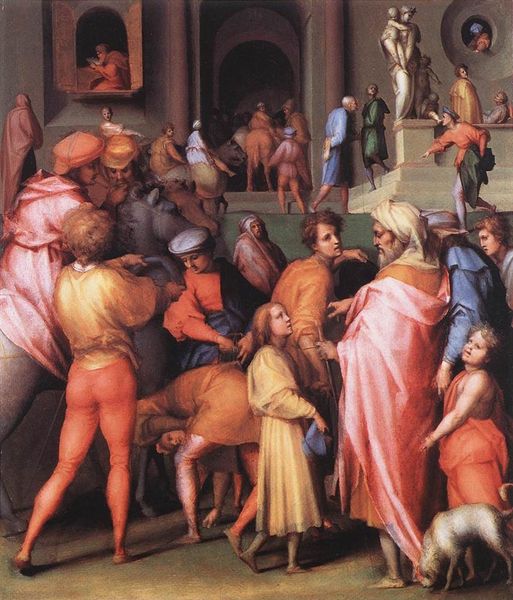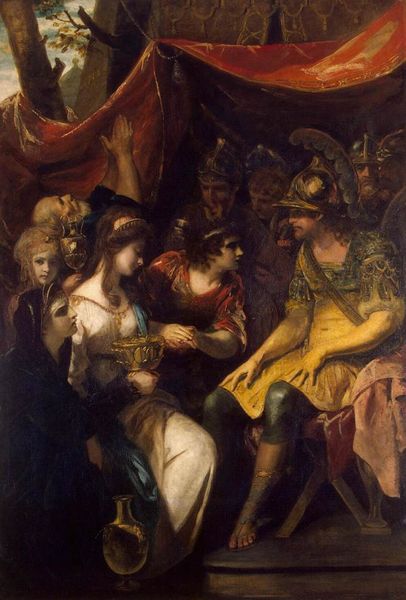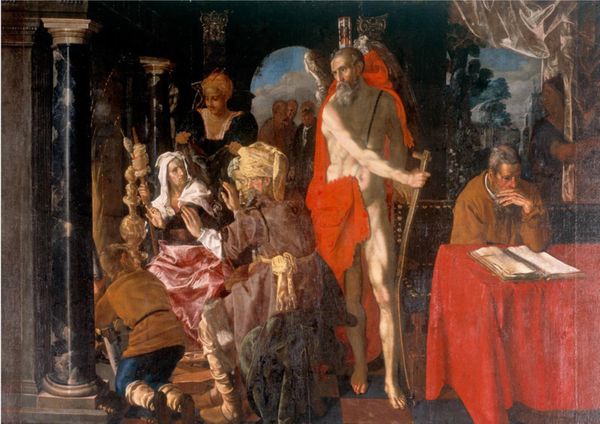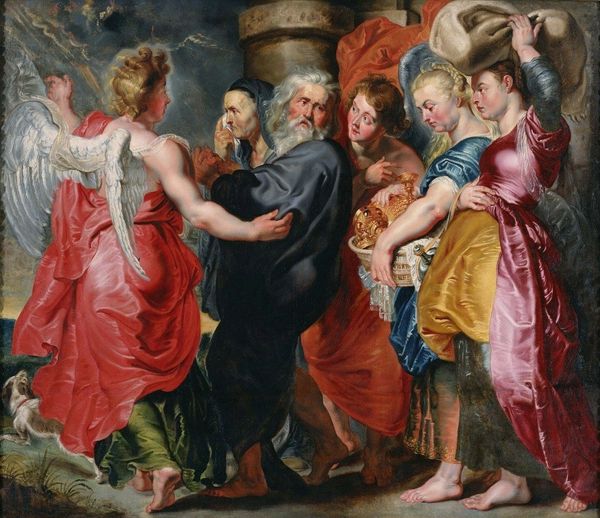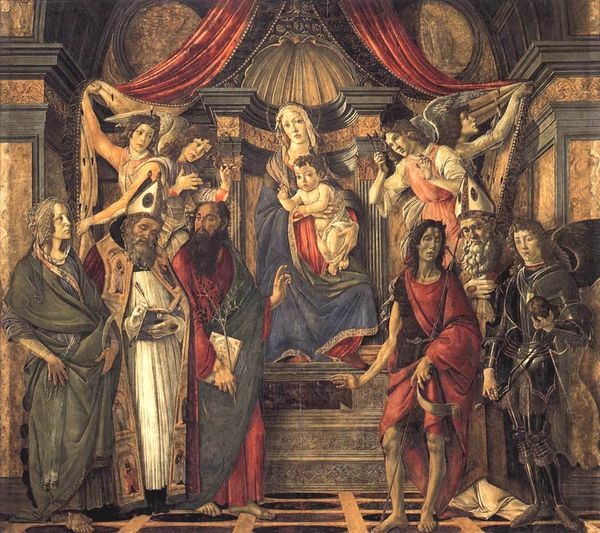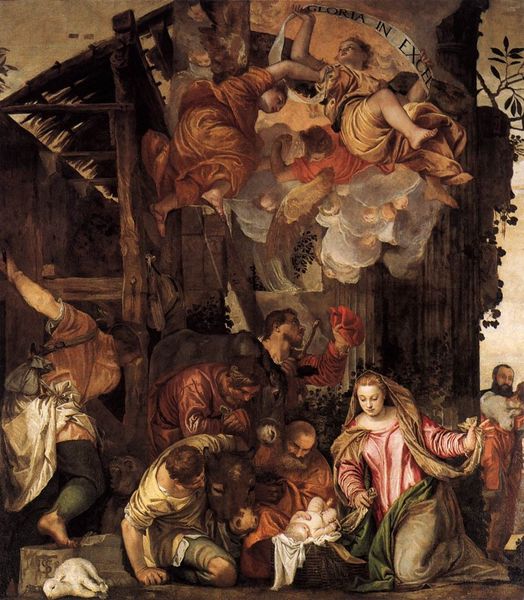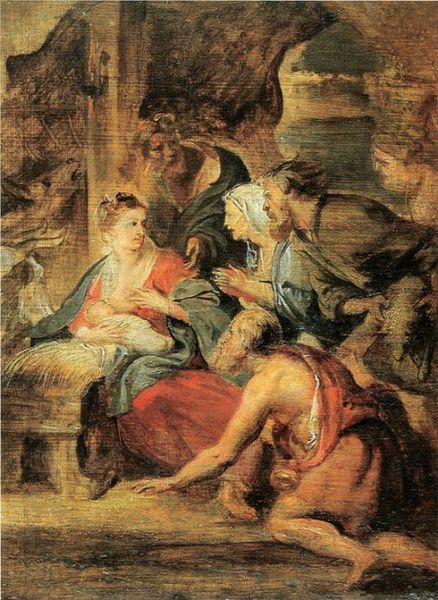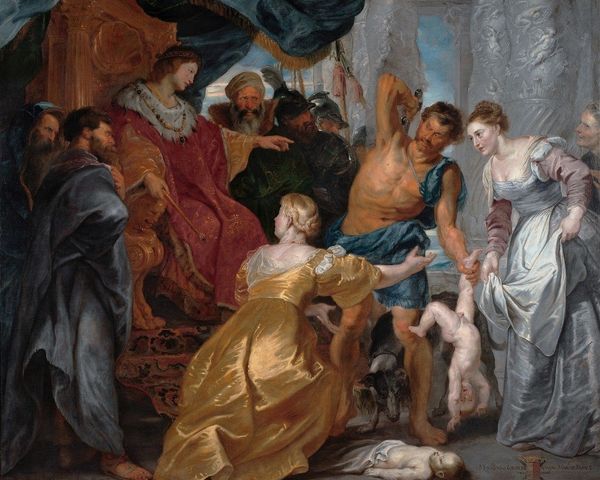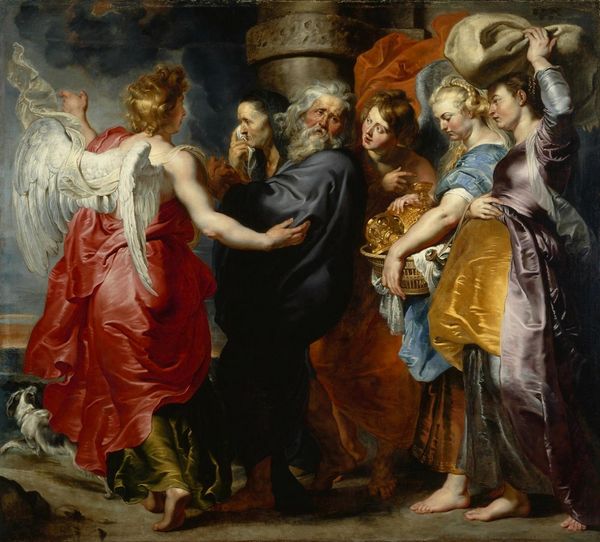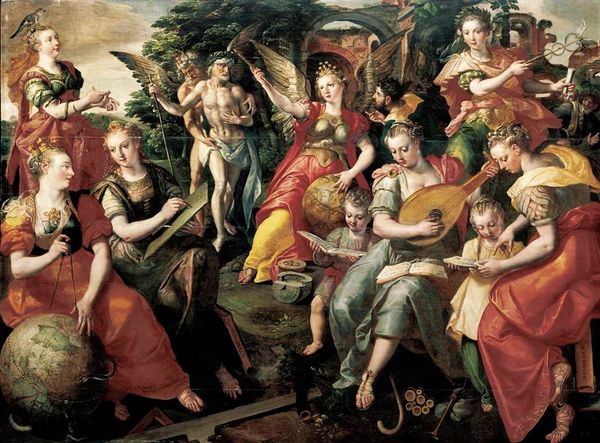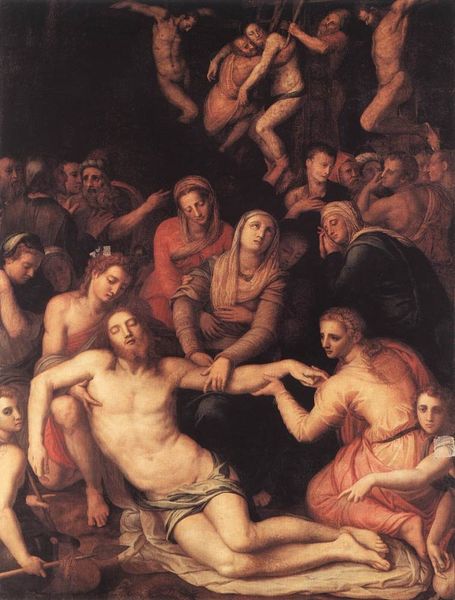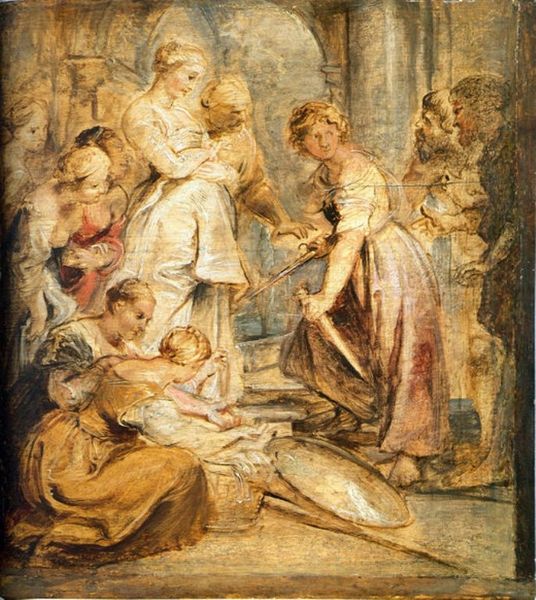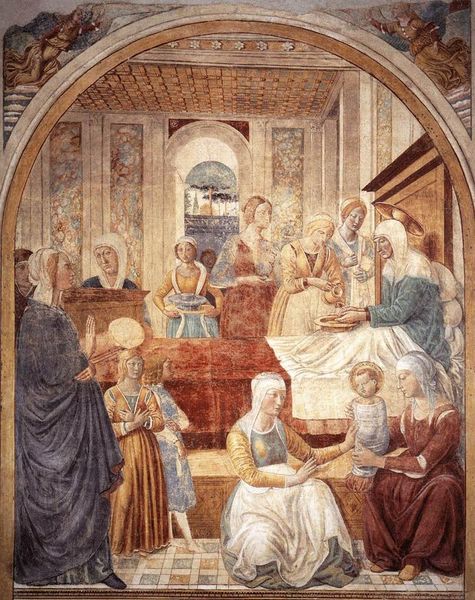
painting, oil-paint
#
portrait
#
painting
#
oil-paint
#
figuration
#
oil painting
#
history-painting
#
italian-renaissance
#
virgin-mary
Dimensions: 325 x 250 cm
Copyright: Public domain
Curator: Rosso Fiorentino’s “Marriage of the Virgin,” painted around 1523, offers a fascinating take on this iconic scene. Editor: My first impression is one of controlled chaos. All these figures densely packed together, but with an odd stillness in their faces, it feels like a play acted out with puppets. Curator: The painting comes early in Rosso's Florentine period, after he'd traveled to Volterra. His exposure to different artistic ideas are now informing his approach. You can see it in the compressed space and rather unusual staging, can’t you? It doesn’t quite fit into typical Renaissance representations. Editor: Not at all. There's an underlying tension, definitely enhanced by the almost metallic color palette. And look at Joseph, with his rod bursting into bloom—it’s not a gentle lily, is it? The symbol feels forceful, almost aggressive here. Curator: It underscores Joseph’s divine selection, highlighting how even the mundane can become sacred. Rosso likely aims to demonstrate the powerful sway that religious institutions wielded over personal destiny. Considering the Medici's control at the time, this piece has a specific social commentary. Editor: Absolutely. Each element carries deeper symbolic weight. Notice the onlookers - their presence validates and memorializes this pivotal event. Those colors especially contribute a dreamlike quality which might add psychological depth into understanding. Curator: Fiorentino definitely takes risks with this composition, doesn’t he? His mannerist influences cause figures like these to have slightly exaggerated expressions. With oil on panel as a support he also brings texture onto the piece like this. It's all of a different flavor from most works you’d consider "Italian Renaissance". Editor: It's certainly thought-provoking. Studying “Marriage of the Virgin” in this detail highlights not just Rosso's individual talent but how religious, historical, and symbolic elements can coalesce in a single artwork. Curator: Exactly, analyzing "Marriage of the Virgin" reveals an alternative approach to this historical setting. It's really just proof of why these periods offer endless intellectual fulfillment.
Comments
No comments
Be the first to comment and join the conversation on the ultimate creative platform.
